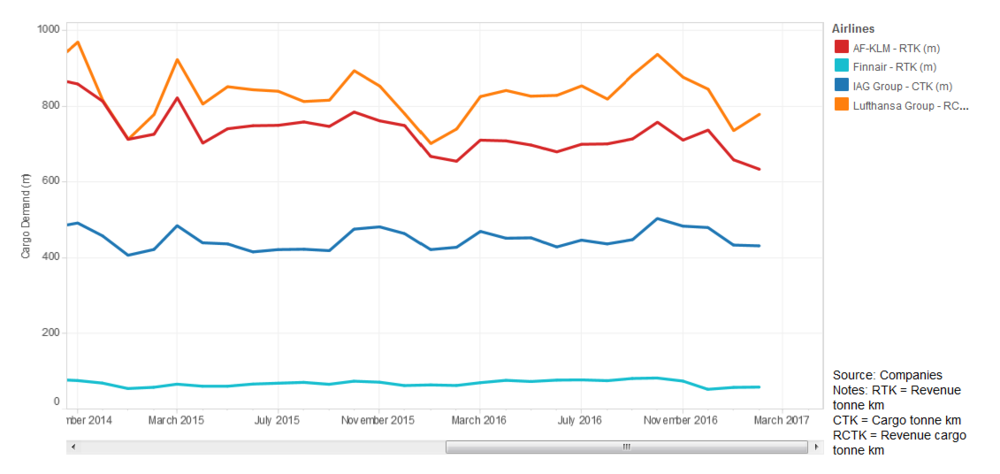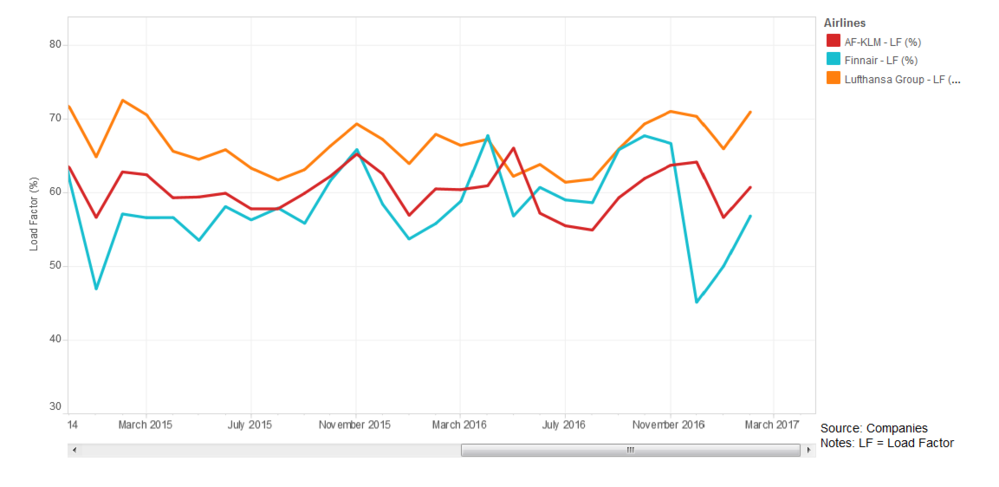European Cargo Monthly: Another mixed month for carriers
21 / 03 / 2017

February was another mixed month for Europe’s cargo airlines as Lufthansa and IAG recorded improvements in demand, while there was a decline at Finnair and Air France KLM.
Despite an extra day in February 2016 due to it being a leap year, the continent’s busiest carrier Lufthansa registered a 5.2% year-on-year improvement in cargo demand to 779m revenue cargo tonne km.
With capacity increasing by a lower level, the carrier’s cargo load factor increased to 70.9% from 67.9% last year.
Click here to access the ACN Data Menu, or on the image below for the interactive version of the chart

The figures from February also provided the opportunity to compare performance during the first two months of the year, which should strip out some of the effects of the Chinese New Year on comparisons.
Over the first two months Lufthansa saw demand increase by 5.1% against the same period of 2016.
IAG Cargo, meanwhile, registered a 0.9% increase in demand in February to 432m cargo tonne km, with its largest carrier British Airways up by 2.1%, Aer Lingus improving by 22.2% and Iberia slipping by 5.7%.
Over the first two months of the year, the carrier group registered a 1.9% improvement in cargo demand.
Air France KLM again saw cargo demand decrease, this time by 3.2% to 634m revenue tonne km in line with moves to reduce cargo capacity to reflect market conditions.
In The Franco Dutch carrier saw cargo capacity during the month shrink by 3.3% against last year, which resulted in an improvement in its load factor to 60.7% in February compared with 60.5% last year.
Over the first two months of the year cargo demand is down by 2.3% compared with the same period in 2016.
Finally, Finnair saw cargo demand decrease by 6.4% year on year in February to 59.1m revenue tonne km.
The carrier blamed the decrease on the lost day as a result of last year being a leap year and also reduced widebody capacity in Asia as it suspended flights to Chongqing as planned due to pilots’ A350 training.
The flights were first suspended on January 11 and will get back underway in early May.
However, the reduced capacity supported a one percentage point improvement in load factors to 56.8%.
Over the first two months of the year the carrier reported an 8.4% decline in demand due to the reasons listed above and an unusually high number of cancellations in Asia traffic in January.
Click here to access the ACN Data Menu, or on the image below for the interactive version of the chart















